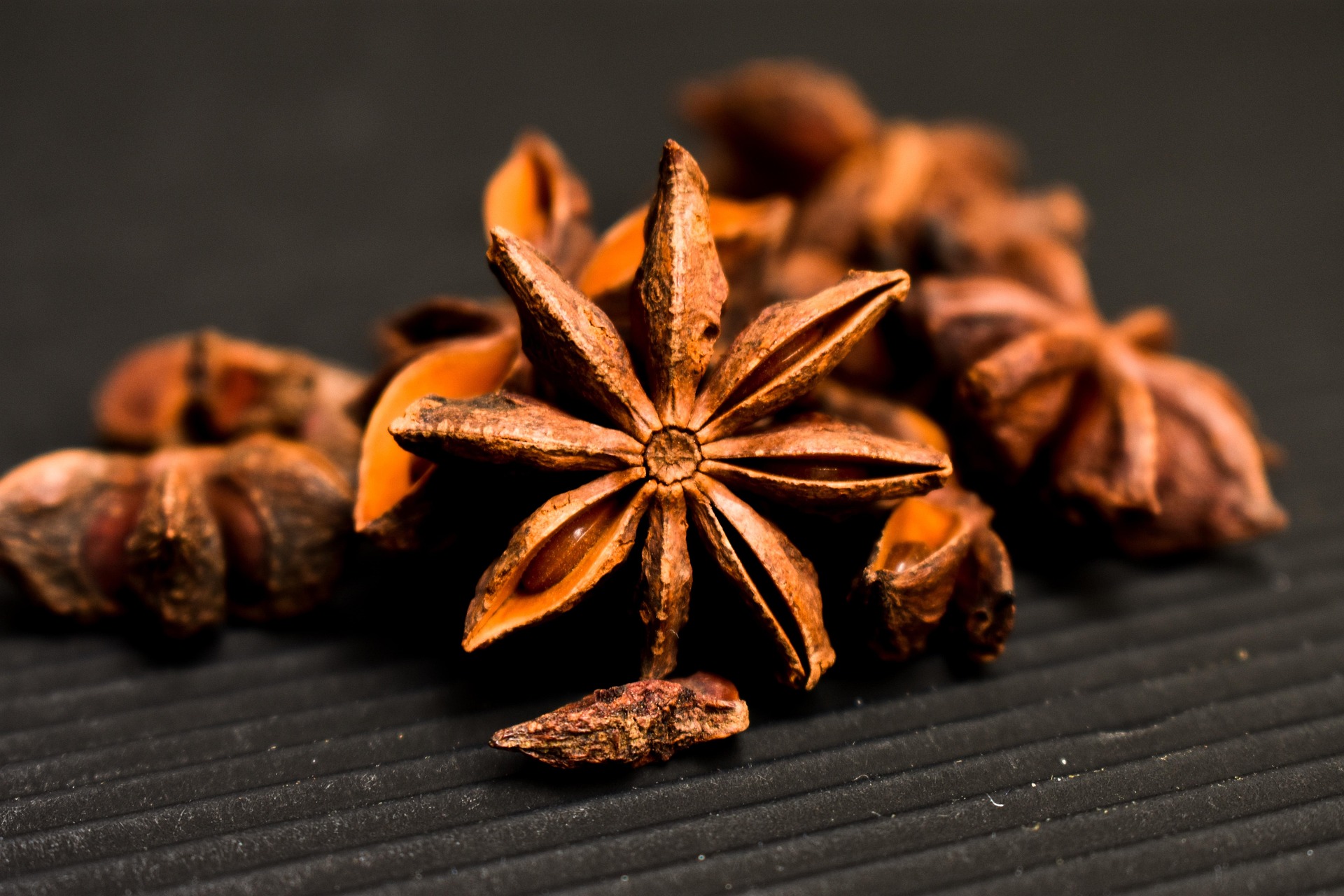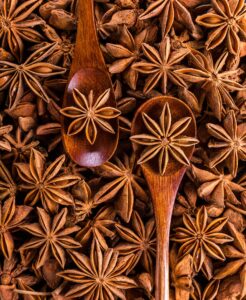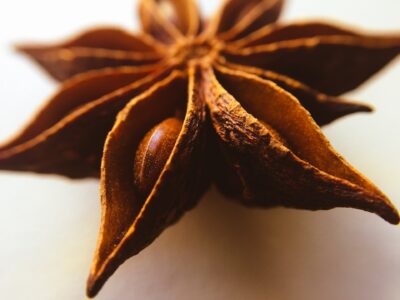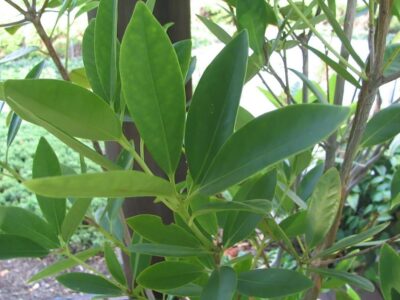Star Anise Tea Detoxifies

Star anise (Illicium verum) is a dried tree fruit used as medicine for thousands of years. Its delicious taste is sweet and licorice-like, with notes of clove and cinnamon. Anethole is the compound responsible for star anise’s taste, fragrance, and many of its therapeutic effects. NutraCleanse is a star anise tea blend that helps eliminate the toxins that impair digestive function. Star anise tea encourages bowel movement and the excretion of waste, while regulating healthy digestive enzymes within the gut. It is antiviral, antibacterial, antifungal, antioxidant, anti-inflammatory, and supports healthy digestion. Overall, star anise tea detoxifies the body.
Star anise includes:
- Anethole
- Shikimic acid
- Linalool
- Quercetin
- Limonene
- Alpha-terpineol
- Estragole
- Flavonoids and polyphenols
Antiviral
Star anise is highly antiviral, primarily because of shikimic acid. This compound is a crucial ingredient in the industrial production of oseltamivir, an antiviral drug effective against influenza viruses. Beyond its role in pharmaceuticals, traditional use of star anise tea in Asian medicine to combat colds and flu supports its antiviral efficacy. Star anise is rich in anethole and linalool, which may also help inhibit herpes simplex viruses and certain respiratory pathogens.
Antibacterial
This star-shaped fruit exhibits antibacterial activity, making it a valuable natural remedy for infections. It can inhibit the growth of multiple bacterial strains, including Escherichia coli, Staphylococcus aureus, and Pseudomonas aeruginosa. The mechanism is thought to involve disruption of bacterial cell membranes by lipophilic compounds like anethole and estragole. This property has led to its incorporation in mouthwashes, soaps, and food preservatives, where it helps reduce microbial contamination.
Antifungal Activity
Star anise is also antifungal. Traditionally, star anise has been used to treat fungal infections and protect food from mold growth. Anethole, along with other terpenoids, exerts fungistatic and fungicidal effects against common pathogens like Candida albicans and Aspergillus species. With the rise of antifungal resistance, star anise represents a promising, natural antifungal.
Antioxidant Capacity
Rich in flavonoids and polyphenolic compounds, star anise exhibits strong antioxidant activity. These constituents neutralize free radicals, reducing oxidative stress implicated in chronic diseases such as cancer, cardiovascular conditions, and neurodegeneration. Star anise demonstrates significant scavenging activity against various reactive oxygen species (ROS). Regularly consuming antioxidants, like those in star anise tea, bolsters the body’s defense systems and mitigates age-related cellular damage.
Digestive Health Benefits
Traditionally, star anise has been used to aid digestion and alleviate gastrointestinal disorders. Anethole relaxes smooth muscle and reduces symptoms such as bloating, cramping, and flatulence. Its carminative effect helps expel gas from the intestines, while mild antispasmodic action soothes irritable bowel symptoms. Additionally, star anise’s antibacterial activity can help balance gut microbiota, potentially improving overall digestive health.
Anti-inflammatory Effects
Star anise exhibits anti-inflammatory properties. Bioactive compounds like quercetin and linalool inhibit inflammatory mediators such as prostaglandins and cytokines. This action may explain the traditional use of star anise in alleviating arthritis pain, sore throats, and other inflammatory conditions. It also has the potential to reduce edema and tissue inflammation.
An Enticing Plant
llicium comes from the Latin illicio meaning “entice” and verum means “true” or “genuine.” Unlike its toxic relative, Japanese star anise (Illicium anisatum), Illicium verum is safe for culinary and medicinal use. Star anise is an evergreen tree native to southern China and northern Vietnam. It belongs to the Schisandraceae family. It can reach heights of up to 8 meters and thrives in subtropical climates. The star-shaped fruit has six to eight boat-shaped carpels radiating from a central axis, each containing a shiny seed. The fruit matures from green to a reddish-brown color and is harvested slightly before ripening to preserve its essential oil content. The star anise tree has lanceolate leaves that are fragrant. It produces small, yellow-green flowers.



